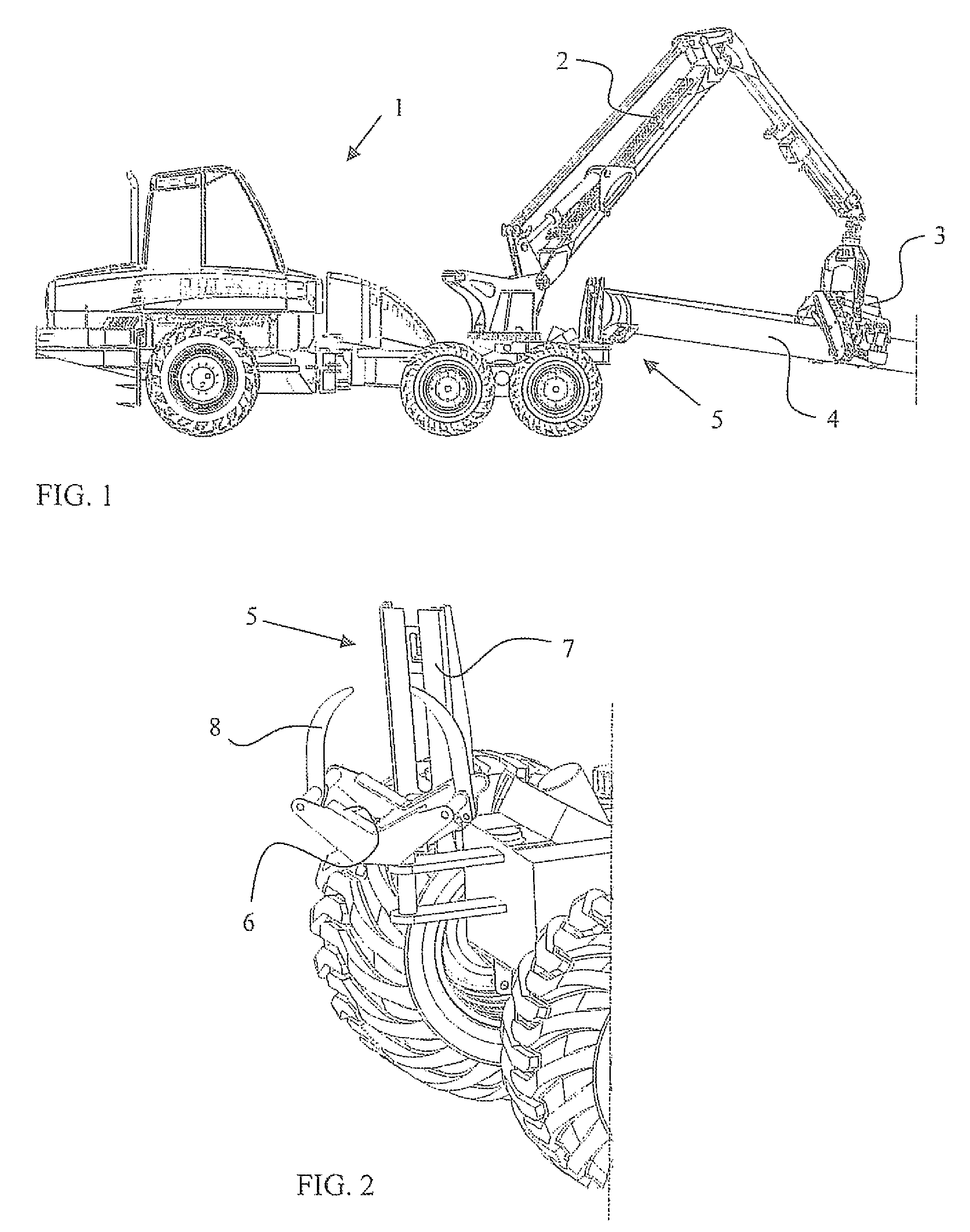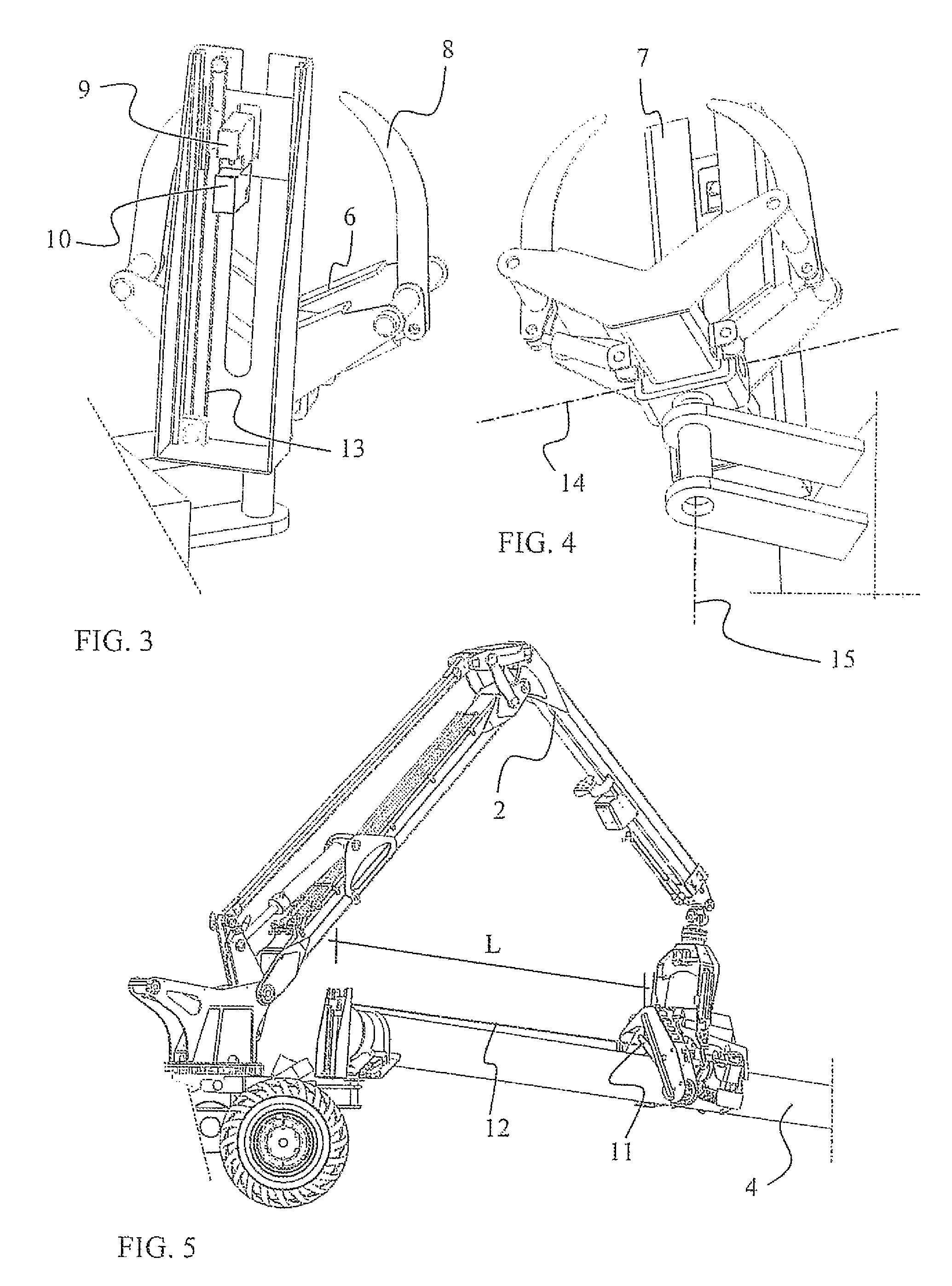Method and arrangement for measuring timber piece
a timber piece and measurement method technology, applied in the field of measuring timber pieces, can solve the problems of large errors in the calibration result, labour-intensive calibration of the measuring device of the wood handling machine, and errors in the diameter measurement of the trunk of the tree, so as to eliminate random errors, improve accuracy, and facilitate the calibration of the measuring device.
- Summary
- Abstract
- Description
- Claims
- Application Information
AI Technical Summary
Benefits of technology
Problems solved by technology
Method used
Image
Examples
Embodiment Construction
Some preferred embodiments of the method and arrangement for measuring a timber piece are described in the following with reference to the above-mentioned figures. In that case, the method and arrangement comprise the components denoted by reference numbers in the figures that correspond to the reference numbers used in this description.
The figures illustrate a wood handling machine 1 comprising a wood handling device movable by booms 2. In this embodiment, this kind of device consists of a harvesting head 3 for felling and handling a tree so as to provide one or more timber pieces 4. Such a harvesting head comprises conventional measuring means for measuring the diameter and length of a timber piece during handling, which are not described in greater detail here.
In the present arrangement, the wood handling machine 1 is provided with a measuring carriage 5, consisting of a concave planar surface 6, which is illustrated in greater detail in FIG. 2 and which supports the lower surfac...
PUM
 Login to View More
Login to View More Abstract
Description
Claims
Application Information
 Login to View More
Login to View More - R&D
- Intellectual Property
- Life Sciences
- Materials
- Tech Scout
- Unparalleled Data Quality
- Higher Quality Content
- 60% Fewer Hallucinations
Browse by: Latest US Patents, China's latest patents, Technical Efficacy Thesaurus, Application Domain, Technology Topic, Popular Technical Reports.
© 2025 PatSnap. All rights reserved.Legal|Privacy policy|Modern Slavery Act Transparency Statement|Sitemap|About US| Contact US: help@patsnap.com



